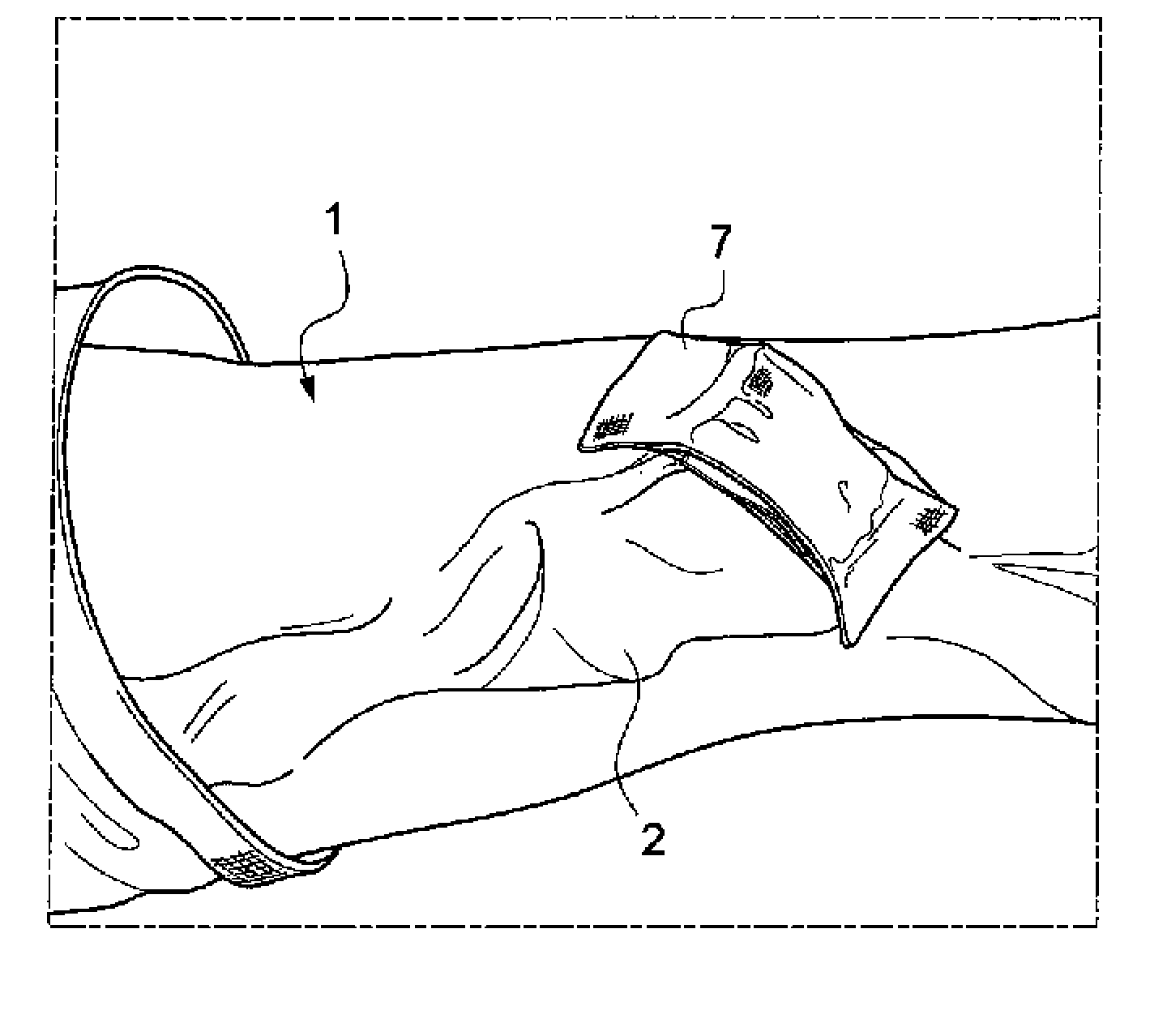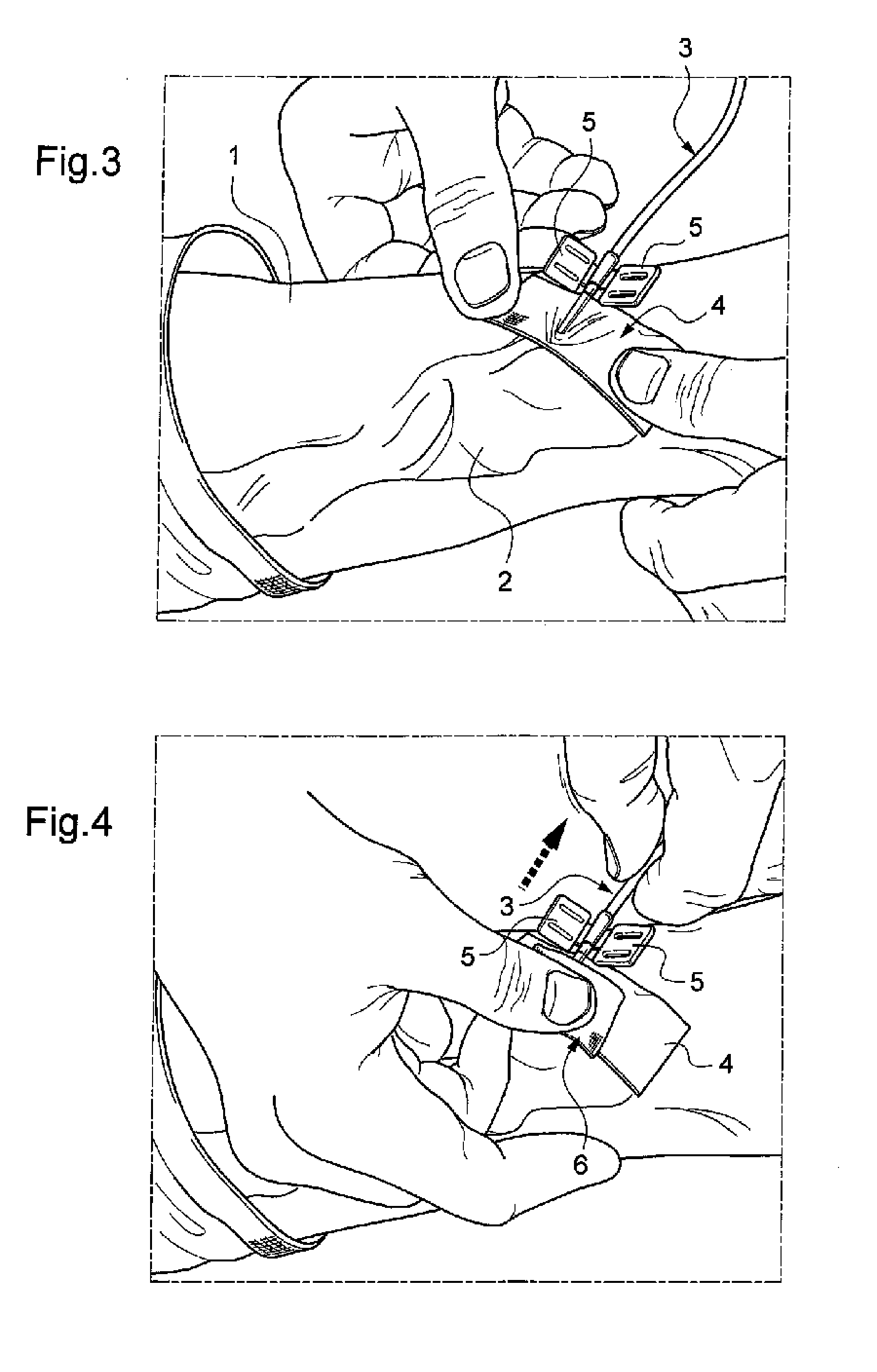Medical device for a puncture site or infusion site
a puncture site and medical device technology, applied in the field of medical devices for puncture sites or infusion sites, can solve the problems of high risk of bacterial contamination, high risk of haemorrhage from the puncture site, and high risk of blood spray, so as to achieve high protection
- Summary
- Abstract
- Description
- Claims
- Application Information
AI Technical Summary
Benefits of technology
Problems solved by technology
Method used
Image
Examples
Embodiment Construction
[0059]Represented in FIG. 1 is the forearm 1 of a patient, bearing an AVF. For the purposes of simplification, a single needle is still in place in this AVF. As will be understood by a person skilled in the art, the procedure described in reference to the figures applies successively both to the venous needle and to the arterial needle.
[0060]In the appended figures, the needle is of the butterfly needle type. It is however understood that the procedure described also relates to needles lacking the wings of butterfly needles, or else catheters (for example of Cathlon® type) or else cannulae.
[0061]The AVF, a vascular access of prime indication that is the most widespread for the dialysed patient, leads to the appearance of aneurysmal zones 2, that can be seen in the figures, the skin being very deformed in the vicinity of the AVF. AVFs are often of short length, so that the two artery and vein needles must be placed close to one another. The use of fastening strips may give rise to a ...
PUM
 Login to View More
Login to View More Abstract
Description
Claims
Application Information
 Login to View More
Login to View More - R&D
- Intellectual Property
- Life Sciences
- Materials
- Tech Scout
- Unparalleled Data Quality
- Higher Quality Content
- 60% Fewer Hallucinations
Browse by: Latest US Patents, China's latest patents, Technical Efficacy Thesaurus, Application Domain, Technology Topic, Popular Technical Reports.
© 2025 PatSnap. All rights reserved.Legal|Privacy policy|Modern Slavery Act Transparency Statement|Sitemap|About US| Contact US: help@patsnap.com



